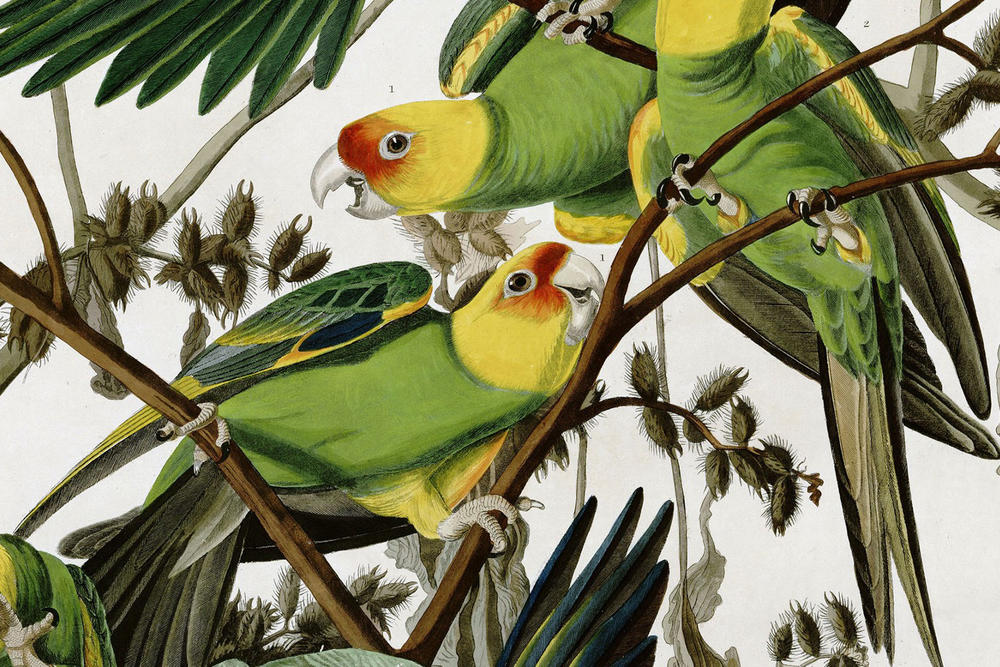Section Branding
Header Content
The Life, Death And Future Of The Carolina Parakeet
Primary Content
The Carolina Parakeet was a wild bird in lots of senses of the word; it flew throughout the Southeast and Midwest, including along the Georgia coast. Revolutionary War soldiers and Manifest Destiny explorers journaled about their bright green plumage and “disagreeable screams.” And they were thought to be poisonous, because they ate cocklebur seeds that were harmless to them but toxic to cats hoping for a feathered meal.
The birds went extinct at the beginning of the 20th century. Now, researchers are using their migration patterns and physiology as a means to explore how we can save at-risk species today.
On Second Thought host Adam Ragusea speaks with Kevin Burgio about the Carolina Parakeet.
Kevin Burgio has researched the Carolina Parakeet in a project that combines historical research with science. His work, which aims to work out exactly how and when the birds died off, is featured in the April issue of Smithsonian Magazine.


